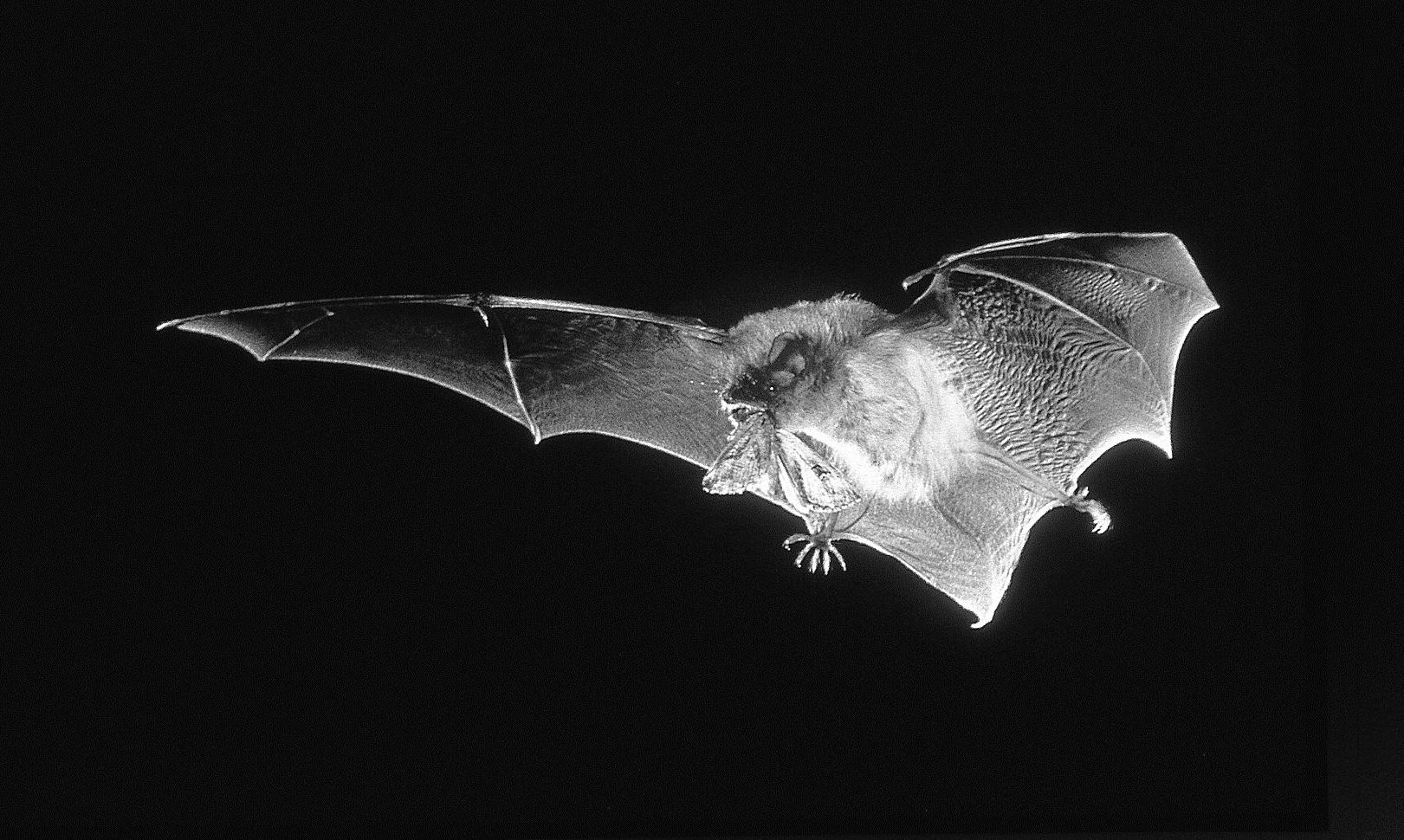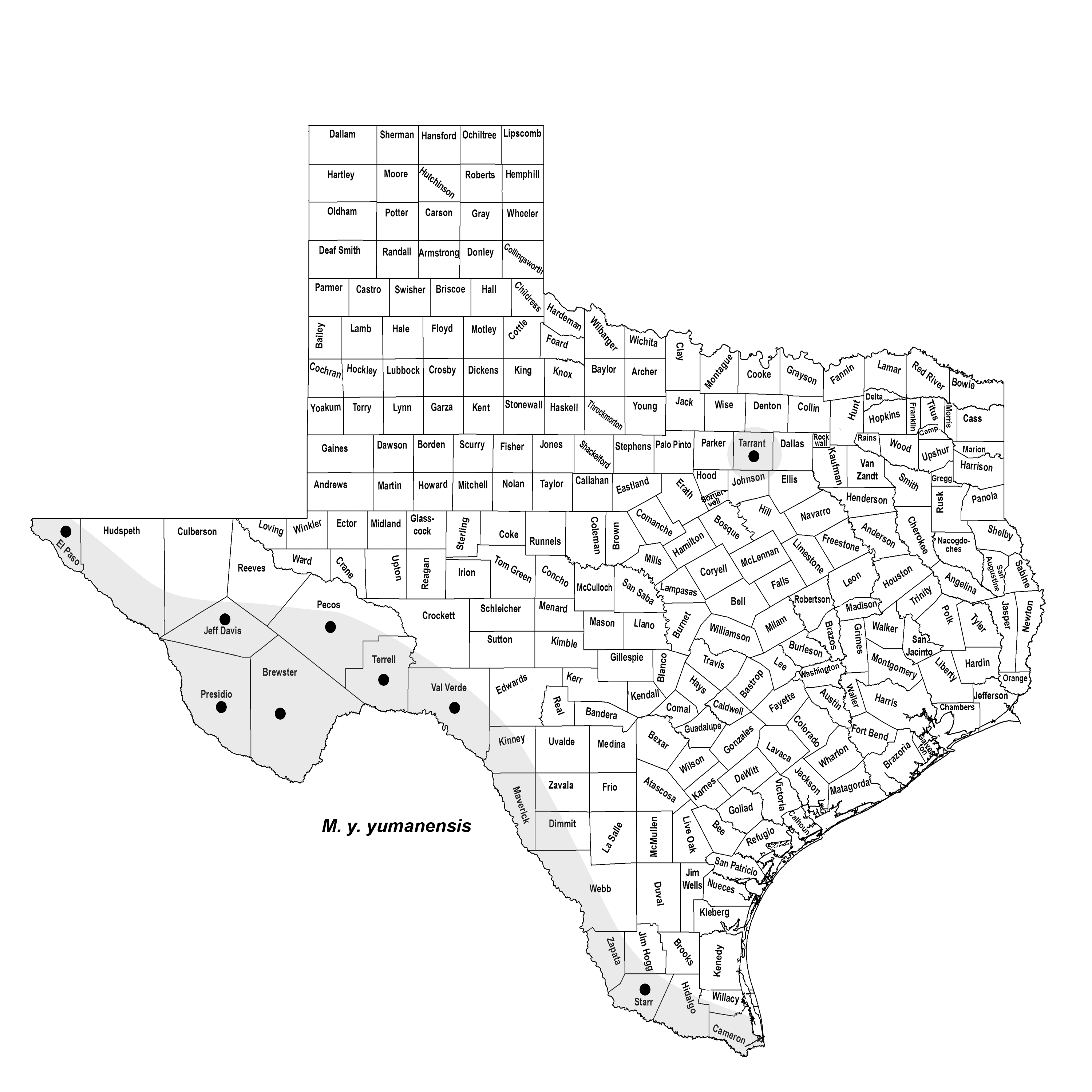YUMA MYOTIS
Myotis yumanensis (H. Allen 1864)
Order Chiroptera : Family Vespertilionidae
DESCRIPTION. A small bat similar to M. occultus; feet relatively large, more than half as long as tibia; ratio of tail to head and body >0.80; coloration dull, pale pinkish, or cream buff; immature individuals darker, nearly cinnamon buff; membranes pale brownish; underparts pale buff, nearly white; pelage short as compared with M. occultus; viewed from the side, the skull rises more abruptly from the rostrum than in M. occultus. Dental formula: I 2/3, C 1/1, Pm 3/3, M 3/3 × 2 = 38. Averages for external measurements: total length, 78 mm; tail, 34 mm; foot, 8 mm; forearm, 34 mm. Weight, 4–8 g.

DISTRIBUTION. This bat is a summer resident of the Trans-Pecos region and the area just east of the Pecos River in Val Verde County. There is one disjunct record from Starr County in the South Texas Plains, and another recent Texas Department of State Health Services record from Dallas County. However, there is no confirmed identification or voucher specimen for the latter record, and given its substantial distance from the nearest records of the species, it must be viewed with caution.

SUBSPECIES. Myotis y. yumanensis.
HABITS. This species, primarily an inhabitant of desert regions, is most commonly encountered in lowland habitats near open water, where it prefers to forage. It roosts in caves, abandoned mine tunnels, and buildings. In the Big Bend region of Texas, it is common in summer along the Rio Grande, where it comes to drink just after sundown. Specimens have been taken in riparian areas associated with cottonwood and willow trees and above open waters along the Rio Grande. The species is known to occur in the Trans-Pecos from April through November, and a few individuals may overwinter in Texas.
The stomachs of bats captured in Big Bend National Park contained moths, froghoppers and leafhoppers, June beetles, ground beetles, midges, muscid flies, caddisflies, and craneflies.
Females give birth from May to early July, and usually only one young is born to each female. Large nursery colonies may form in buildings, caves, and mine tunnels and under bridges. These colonies are very sensitive and quickly abandoned if disturbed.
POPULATION STATUS. Common, year-round resident. The Yuma myotis appears to be relatively common in the desert lowland habitats near the Rio Grande.
CONSERVATION STATUS. The IUCN status of the Yuma myotis is least concern, and the species does not appear on the federal or state lists of concerned species. At the present time, it does not appear to be in bad shape because of its wide range, apparently stable population, and occurrence in a number of protected areas, although there is a need for more information on population abundance in Texas.
From The Mammals of Texas, Seventh Edition by David J. Schmidly and Robert D. Bradley, copyright © 1994, 2004, 2016. Courtesy of the University of Texas Press.
Natural Science Research Laboratory
-
Address
Museum of Texas Tech University, 3301 4th street, Lubbock, TX 79409 -
Phone
806.742.2486 -
Email
nsrl.museum@ttu.edu

